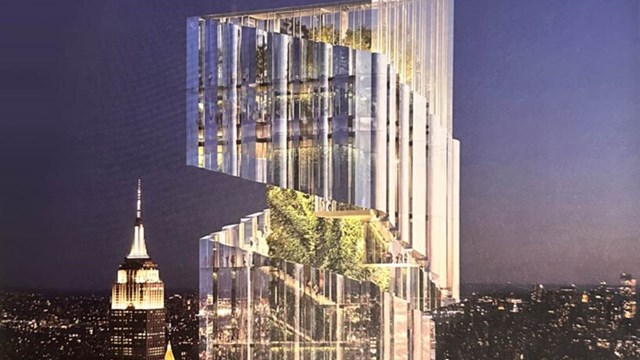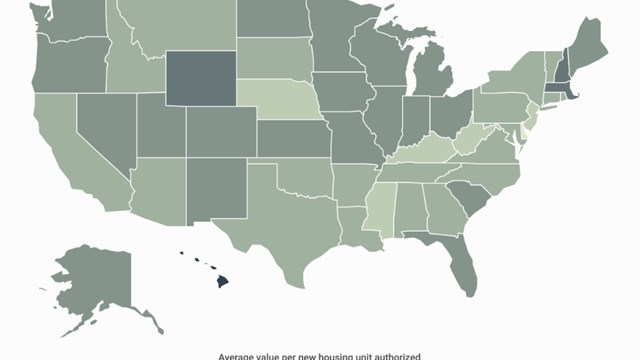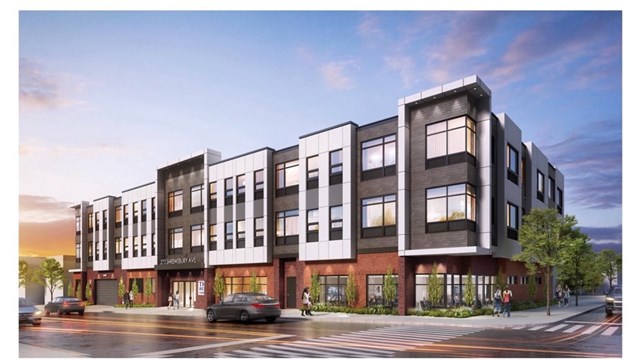Tranquil gated communities in quiet suburban condo developments are probably not the first things that spring to mind when you think about New York City and its outlying boroughs. The city is known for brownstones, high-rises, and skyscrapers but there are indeed gated communities, some of which are more than 100 years old.
Communities like Sea Gate in Coney Island, date back to 1892, and Breezy Point in Rockaway, date back to the early 1900s - but those were more the exception than the rule.
Then, between 1970 and 1996, the number of units in gated communities in the U.S. zoomed up from less than 5,000 to around 19,000, according to "Fortress America: Gated Communities in the United States," by Edward J. Blakely and Mary Gail Snyder (Brookings Institution Press, 1997). Many have popped up on Long Island, and others within the city's outer boroughs, such as Bay Bridge in Bayside, built in 1982, and the newly-built Magnolia Court in Ozone Park.
Many gated communities offer more than homes - they offer clubhouses, swimming pools and other amenities, just like many non-gated suburban condo developments. An online ad for The Villages at Mt. Sinai Homes, a gated community in Suffolk County, reads, in part, "A 5,100-square-foot clubhouse, fitness center, tennis courts and a swimming pool will provide an array of entertainment in an unbeatable location. Enjoy `Resort at Home' living while we take care of your maintenance needs, including lawn care and snow removal."
There are many types of gated communities. Of the ones within the city that we've mentioned, for example, Sea Gate and Breezy Point mainly consist of private houses, while Bay Bridge and Magnolia Court are condo developments.
The long and sometimes tedious appraisal process for moving into a New York City co-op building is well documented - but is there a similar approval process when buying into a gated community?
When the community consists of private houses, says Blakely, "Gated communities are simply residential estates, and the individual buys a home with underlying covenants in the deed that restrict the uses of the property."
Likewise, according to Pete Spanakos, a Sea Gate resident and historian of the Sea Gate Association, says that in his development, "There are no controls. Whoever wants to buy, can buy, but they have to pay a separate tax to the association - it's in the deed." Among the amenities that this fee supports is the clubhouse and the development's own security force, made up of armed peace officers.
In Bay Bridge, which consists of three-story multiple-dwelling condo buildings, "[Prospective buyers] don't have to go before the board, but there is an application process. We have the right of first refusal," says manager Elaine Kornbloom.
How does a gated community's board operate? Once again, it depends on the community. According to Blakely, "The board in a gated community [consisting of private homes] can restrict activities in the common spaces only and charge dues for maintenance of common spaces and operation of the gate."
At Sea Gate, a third of the board comes up for election each year, and the board sets assessments for taxes. Just like co-op or condo boards, it has an annual meeting, and monthly meetings for the board members themselves.
In those gated communities that consist of condos, the boards are basically regular condo boards of managers. For example, when the 48-unit Magnolia Court is fully occupied, says Maria Carr - the broker handling sales for the development - its residents will form a board of seven members.
Whatever the nature of the boards, they typically oversee maintenance of the common areas and maintain the fences. In developments consisting of private houses, they can set rules on lawn care, color of houses, and more. Sea Gate even has its own speed limit: 20 miles per hour
According to Blakely, "The underlying ground in a gated community [consisting of private houses] is owned by the homeowner in almost all instances." In condo developments, including those that are gated, the association owns the ground below the houses, and it is part of the initial underlying mortgage, according to Ralph Perfetto, head of the Brooklyn Co-op and Condo Owners Association.
New York City being the cultural pastiche it is, sometimes conflicts break out between the residents of a gated community and the surrounding municipality. At Sea Gate, says Spanakos, "We had a fence over the water [separating Sea Gate's beach from the neighboring Coney Island beach]. Mayor [Rudy] Giuliani had it torn down, but we went to court and had it put back."
A current fight between the city and Sea Gate, he adds, concerns the responsibility for maintaining the 120-year-old sewer system under its streets. "We want the city to assume the multimillion-dollar project to upgrade the system, but they won't do it," says Spanakos. (The city may have its work cut out for it; Spanakos is a one-time amateur boxer who represented the U.S. in the 1959 Pan-American Games.)
Sea Gate also has seen internal conflicts, says Spanakos. For example, the community's Hasidic residents, who now number about 12 percent, "Wanted to keep the grounds gates open on Saturday [the Jewish Sabbath], because on that day, they're not allowed to use a key," says Spanakos. The complex decided to keep the gates locked, and many Hasidim have gotten around the prohibition by simply waiting until someone else comes along and opens the gate.
Blakely, a critic of gated communities, feels that "The biggest appeal [of living in a gated community] is snob value," and believes the safety factor of walls and gatehouses is exaggerated.
However, many residents of such communities in or near New York City would surely disagree with him. Sea Gate, for example, is a stone's throw from the Coney Island area - one of the few neighborhoods in the city where serious crime went up last year, even as crime continued its downward trend citywide.
Even so, says Spanakos, "I rarely lock my house door. As a matter of fact, for about two months, when I was getting a very expensive door, I only had a sheet of wood in front of the house."
When talking about the attractions of Bay Bridge, Kornbloom mentions both safety and the development's amenities. "It does have a certain amount of protection - it's totally gated, totally surrounded by a fence, with a booth that's manned 24 hours a day," she says. "The clubhouse has all the facilities you would need, a gym, indoor and outdoor swimming pool. This community - a luxury condo with a clubhouse - is unique to our city."
Describing the smaller Magnolia Court, Carr says privacy is one of the new condo's main draws. "Only those people who live there can park there. A guest has to park [outside] on the street." At Magnolia Court, owners enter the gate by using a card - there is no guard, although Carr says one might be added in the future.
Do residents in gated communities tend to be more or less involved with community affairs? Because a gated community often feels like a neighborhood with more definitive borders than most, getting association members and homeowners involved in community planning and programming can often be even harder than it is in supposedly tight-knit urban high-rises.
Blakely agrees that even though gated communities use the idea of community as a selling point, "In my research, most people did not know who was on their board, and did not care - except at the time of annual assessments."
For his part, Spanakos complains of Sea Gate residents who don't attend meetings. But clearly, it depends upon the development, the neighborhood and the issues - just like any residential complex.
Finally, a word about the monthly maintenance charges in those gated developments that are made up of condos rather than private homes; owners in Magnolia Court, says Carr, will pay anywhere from $222 to $400 per month, with a 15-year tax abatement. "You're not really paying more because it's gated - it's still low for condos."
Blakely, on the other hand, says that his research finds that on the average, charges are "very high - from $500 to $5,000 per month," depending on the amount of security and the common-area assets such as a golf course. But, however, according to his book, there are few examples from the New York area. And as far as recreational assets are concerned, at Bay Bridge the clubhouse is supported by separate dues, not the association members' common charges, to cite one example.
So obviously, there are many types of gated communities, with different types of housing, different financial arrangements and different amenities. What they seem to have in common - at least in New York and the immediate vicinity, as opposed to the "gold coast" communities of southern California and Florida, are two things: a desire to be free of the worst features of urban living, such as street crime, car thefts, noise, and graffiti; and a desire to provide a pleasant environment, with well-maintained lawns and roads, parking, and, in some cases, attractions such as swimming pools and tennis or racquetball courts. While any residential community has its advantages and disadvantages, gated communities, in some cases, offer the best of both worlds.






Comments
Leave a Comment